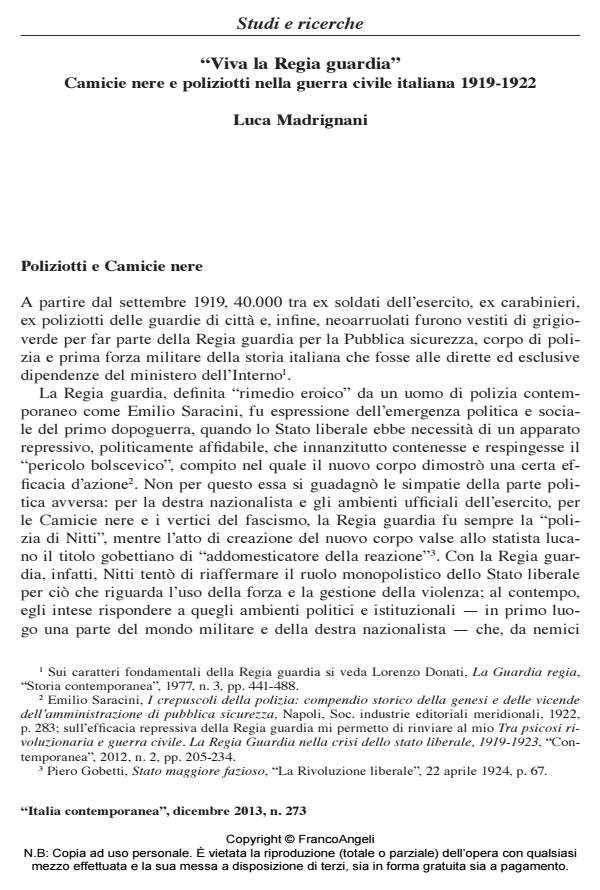"Long live the Royal Guard". Blackshirts and policemen in the Italian civil war 1919-1922
Journal title ITALIA CONTEMPORANEA
Author/s Luca Madrignani
Publishing Year 2014 Issue 2013/273 Language Italian
Pages 30 P. 519-548 File size 844 KB
DOI 10.3280/IC2013-273001
DOI is like a bar code for intellectual property: to have more infomation
click here
Below, you can see the article first page
If you want to buy this article in PDF format, you can do it, following the instructions to buy download credits

FrancoAngeli is member of Publishers International Linking Association, Inc (PILA), a not-for-profit association which run the CrossRef service enabling links to and from online scholarly content.
Despite the abundant literature on the first post-war period, the topic of the active role played by police forces in the ascent to power of Fascism lacks specialized studies expressly dedicated to it. Even less such subject has been treated in a reversed perspective, that is the way how the action squads looked at the men in uniform, particularly the Royal Guards, a police corps created by Nitti and set under the authority of the Ministry of the Interior. The street behavior of the Blackshirts would depend on the ostensible role the Fascists wanted to impersonate and on whom they considered as their favorite enemy: bulwark of anti-bolshevism no less than subversive spearhead against the government. An analysis of a number of case studies helps us identify the basic elements of this supposed contradiction between the defense of order and the assault on power, which in real facts paved the way to Mussolini’s dictatorship while bringing the crisis of the Liberal state to the point of succumbing under the blows of political violence.
Keywords: Police forces, Fascism as a bulwark of order, Fascism as a subversive movement, Blackshirts, crisis of the Liberal state, political violence
Luca Madrignani, "Viva la Regia guardia" Camicie nere e poliziotti nella guerra civile italiana 1919-1922 in "ITALIA CONTEMPORANEA" 273/2013, pp 519-548, DOI: 10.3280/IC2013-273001